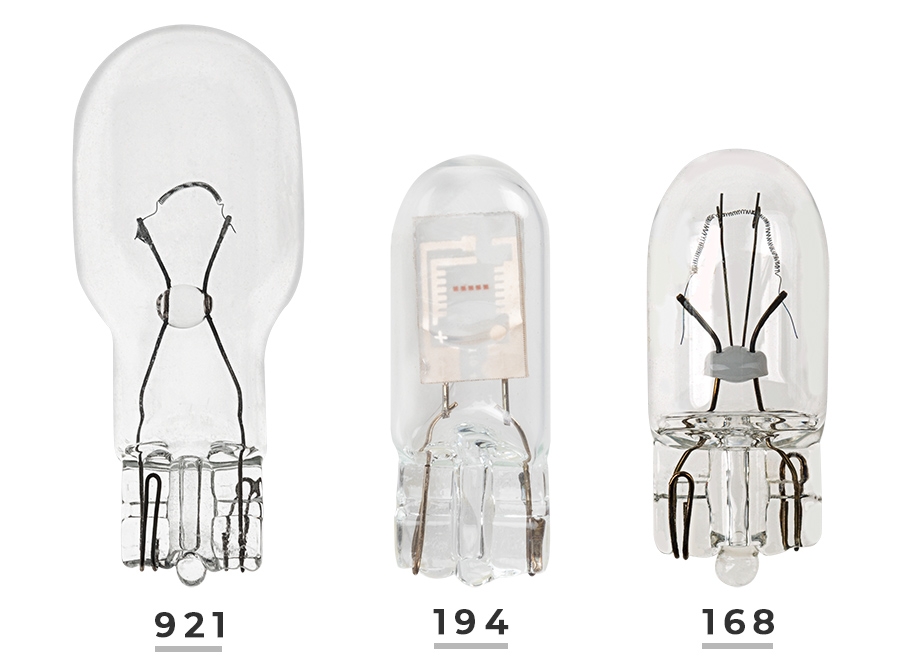In this article, we’ll be taking a look at the differences between 168 VS 194 Bulbs
Both of these bulbs can be used for interior lighting in your car, and are interchangeable.
However, there are a number of differences between them such as the fact that 168 bulbs are brighter than 194 bulbs. However, lifespan is better on 194 bulbs and they also produce less heat.
If you’re debating which bulb to use for interior lighting in your car, we have tested the vast majority of options and can help you make the best choice.
Keep reading for more information on the differences between 168 and 194 bulbs.
| 168 | 194 |
| Rated for about 4.9 watts of power | Rated for about 3.8 watts of power |
| Light output is brighter than 194 bulbs | Slightly dimmer light output compared to 168 bulbs |
| Rated for 3 candle power | Rated for 2 candle power |
| Lasts around 1500 hours with regular usage | Lifespan of most bulbs is around 2500 hours, even with heavy usage |
| Produces more heat | Produces slightly less heat, but the difference is not massive |
| Mostly seen in warning lights, etc | Used for continuous lighting |
| Can be used at different levels of brightness | Only one level of brightness offered |
168 vs 194 Bulbs Compared
Wattage
Starting off with the power rating of these bulbs, we have one of the subtlest differences between the two.
168 bulbs are rated for 4.9 watts, whereas 194 bulbs are rated for around 3.8 watts.
That isn’t the biggest difference and it shows in the bulb’s performance and light output. That said, we can report that 168 bulbs offer nominally better interior coverage and lighting.
Brightness
As expected, there is a bit of a difference in terms of brightness between these two bulbs.
168 bulbs are brighter, rated for about 3 candlepower compared to 2 candlepower on the dimmer 194 bulbs.
In practice, this difference isn’t immediately noticeable, however, 168 bulbs do offer wider coverage which is essential for interior use.
Lifespan
168 bulbs last around 1500 hours with regular usage. But, 194 bulbs blow that number out of the water with a whopping 2500 hours of usage, even with heavier loads.
This massive difference in longevity is why many people prefer 194 bulbs over 168 bulbs for interior use.
Heat
A common complaint many people have regarding 168 bulbs is that they run a bit hotter than 194 bulbs.
This can cause discomfort for the driver inside, while also potentially melting or damaging vulnerable plastic parts. Really though, the difference in terms of heat is not that big between the two, and both are safe for moderate use.
Use case
168 bulbs are most commonly found in warning lights, map lights, glove compartment lights etc. The theme here is that these bulbs are designed to be used in lights that are turned on less often.
On the other hand, 194 bulbs are designed for continuous lighting and are therefore a better option if you tend to use interior lights for longer periods of time.
Levels of brightness
Another functional difference that will make or break either bulb for you, is the levels of brightness that these bulbs can be used at.
168 bulbs are designed to be used at different levels of brightness. That means if you’re using these bulbs in your gauge cluster, you can dim or brighten the light depending on ambient light conditions.
194 bulbs only after one level of brightness which is a major drawback when you consider that different levels of brightness are more appealing and useful in different conditions.
What are 168 bulbs and what are they used for?
The 168 is a variety of T10 light bulb. Sharing a similar base design and constructed from an identical incandescent filament, T10 bulbs have certain distinct features. Their notable high wattage results in superior brightness, making them ideal for interior illumination.
Primarily, the 168 bulb is employed in warning lights, owing to its remarkable luminosity which allows for easy detection of signals. Discussing further the light intensity of the 168, it boasts a power rating of 3-candlepower and a power consumption of 4.9 watts. Moreover, it generates substantial heat and offers the flexibility of adjustable brightness levels.
What are 194 bulbs and what are they used for?
Also falling under the T10 category, the 194 bulb exhibits a marginally lower wattage at 3.9 watts. Its luminous intensity stands at 2 candlepower, implying it emits a softer glow, perfect for sustained lighting situations. An appealing aspect of the 194 bulb is its extended lifespan, which can stretch up to 2,500 hours.
It too generates heat, yet is limited to a single brightness level. The versatile 194 bulbs find their utility in a variety of applications such as dome lights, glove box lights, and reading lights. Despite its typical use as an interior light, it excels in functions such as braking, backup, and turn signal lights.
Conclusion – the difference – 168 VS 194 Bulbs
So those are the main differences between 168 and 194 bulbs
This is quite a tough matchup between these two bulbs. Both have their own pros and cons and offer great usability in different use cases.
168 bulbs are brighter and can be used at varying levels of brightness, but they also produce more heat and don’t last as long. 194 bulbs can be used for continuous lighting and their lifespan is stellar but they are dimmer and only run at one level of brightness.
Keeping all of these differences in mind, we think that 168 bulbs are the superior choice, thanks to their brighter output, varied use cases and better interior coverage.


